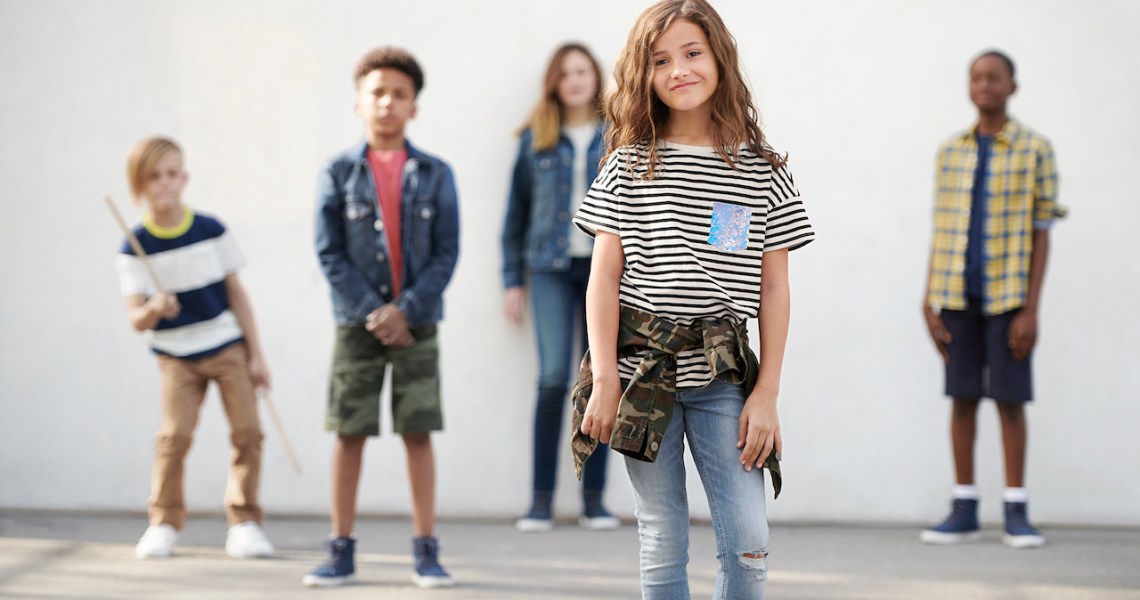Following its disappointing 2019 first quarter earnings, Gap is launching a kids apparel-focused plan to turn the business around.
Last week, the brand rolled out its back-to-school campaign, the first campaign under its recently appointed CMO, Alegra O’Hare. O’Hare joined the team in February from Adidas, where she was svp of global brand communications for Adidas Originals and Adidas Style. The new campaign features a group of musically inclined kids, from a 7-year-old self-taught pianist who also happens to be blind, to a 13-year-old electric guitar player. In the video, the kids play the Guns N’ Roses hit “Sweet Child O’ Mine.”
View this post on Instagram
Gap’s push into more kids-focused marketing is a strategic one for the brand, considering the growth of the children’s clothing market. Market intelligence agency Mintel projected that the market will reach $40.6 billion by 2023.
The campaign includes videos and images shared across social and digital channels and had a “significant media investment” behind it, a spokesperson for the brand said. However, the brand declined to share specifics around the investment. Gap Inc. CEO and president Art Peck said on the brand’s latest earnings call in May that the company shifted most of its marketing spend away from the first quarter to late Q2 and Q3, with a specific focus on the kids apparel sector.
“You’ll also see Gap brand reinvest in marketing, and its kids and baby business, with a strong back-to-school push later this year,” said Peck. “This is especially important, given that market share is now up for grabs, and this is a clear opportunity for Gap brand given its strong equity in kids and baby.”
Ad rendering preventing in staging
Ad position: web_incontent_pos1While the campaign has been rolling out across social media, on the Gap Kids Instagram account, in the last week, some experts question whether the effort will help Gap accomplish the goals laid out by Peck.
“Gap has been really struggling to find its identity over the past few years, and the latest back-to-school campaign is no different. While it’s well-produced and its stars adorable, it is nothing more than a montage of slick visuals of amazing kids doing cool stuff. Gap needs to do the hard work of defining its own core message, rather than riding off of the cuteness of kids,” said Quynh Mai, founder of creative agency Moving Image & Content.
Travis York, CEO of advertising agency GYK Antler, agreed that while the brand has been known as an iconic brand and advertiser over the last 25 years, it has to work harder today to connect with kids and their parents in its marketing.
“The biggest challenge [Gap] will have with this campaign is convincing the parents of this age group — who remember the brand as a mall retailer worn by the main stream — that it’s now for their unique kid who is creative and bold by nature. The positioning is a worthy one and the concept is cool. I’m just not sure that it’s authentic to Gap or believable by its target audience,” he said.
Over the last few quarters, Gap has reported less-than-ideal earnings. When Gap Inc. reported its first quarter earnings for 2019 in May, Peck said the first quarter was a challenging one. “We are not at all satisfied with our results,” he said. Net sales, across Gap Inc. brands, were down 2% compared to the first quarter of the previous year, to $3.7 billion. Comparable sales at Gap were down 10% for the quarter, versus down 4% the same time last year.
Ad rendering preventing in staging
Ad position: web_incontent_pos2Hilary Bergman, account director at brand consultancy Burns Group said she attributes some of these challenges to a lack of innovation from the brand in terms of product, especially a time when new direct-to-consumer brands are taking over and fast fashion companies churn out new trends weekly. Gap is facing increasing competition not only from traditional retailers like Target, which has launched private-label kids brands like Cat & Jack, but also new DTC brands for cool kids like Rockets of Awesome.
“We all grew up with Gap, and the reality is that the clothing that’s in stores today is not entirely different than what we were buying 10, even 20 years ago. We live in a world where fashion and trends are rapidly evolving, creating a place and need for fast-fashion brands like Zara, H&M and Forever21. And while the brand has made strides in terms of its marketing, it’s not enough to show diverse faces, but it also [needs to] show styles that are consumer-centric, appealing to those from varying walks of life.”




